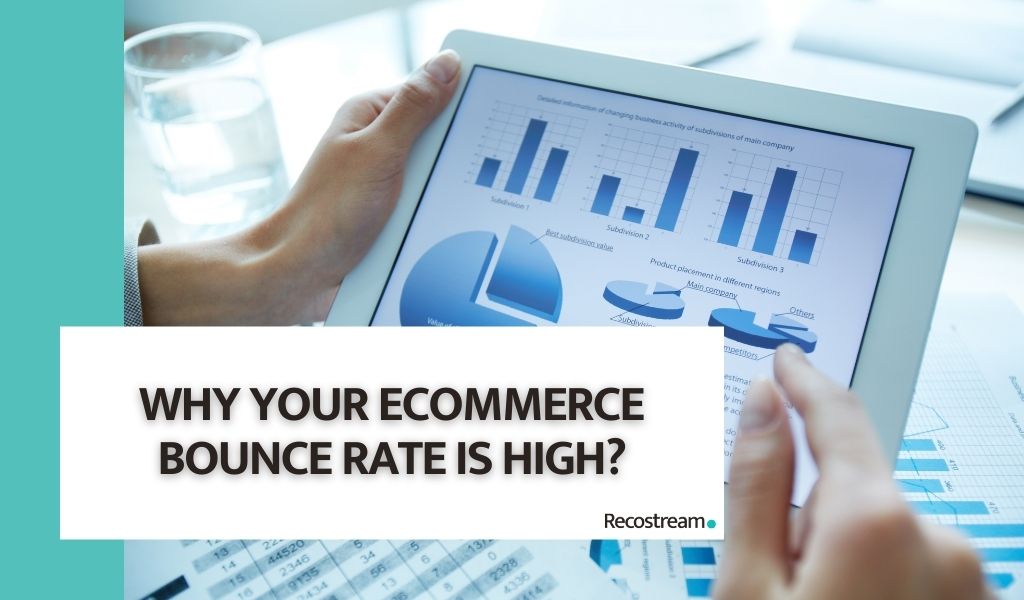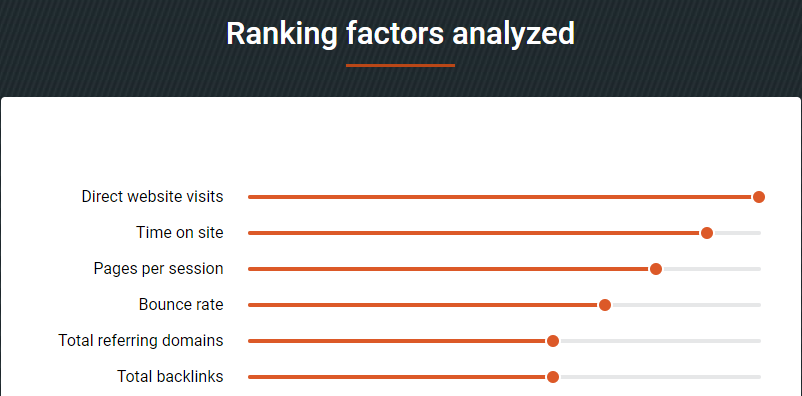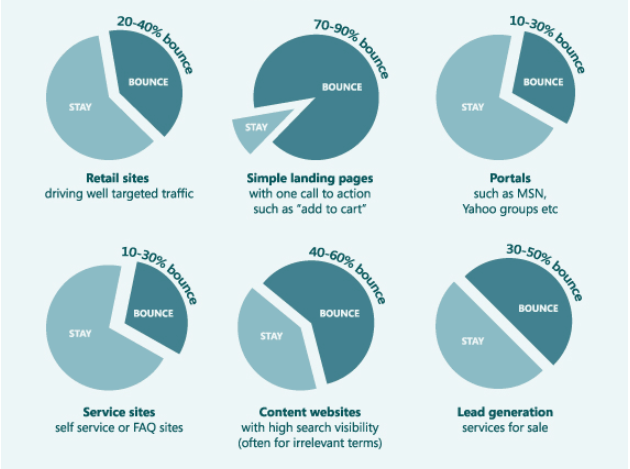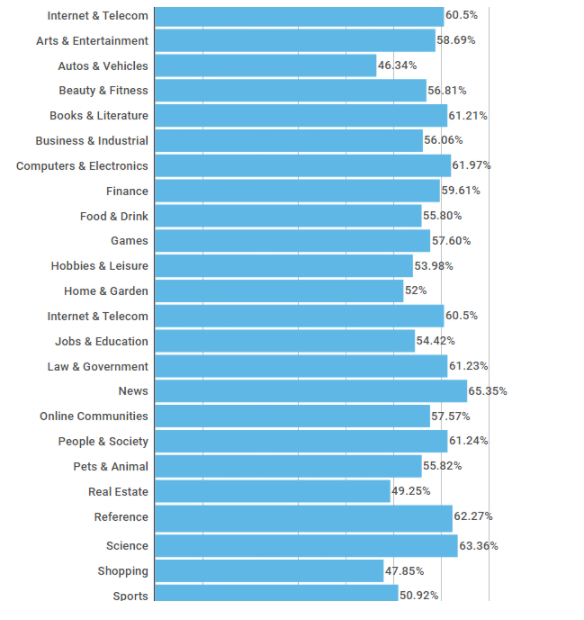Bounce Rate: why does my online store have a high bounce rate? Reasons and the solution

The overriding goal of each online store is to constantly improve sales results and expand its customer base.
For this reason, it is extremely important to maintain the level of customer's attention, because only a truly interested user will be able to convert.
How can the website owner check if the customers are really interested in the content presented? Maybe some element of the website discourages users from continuing to browse the store's offer?
The answers to these questions will help provide the bounce rate value.
In this blog post, we will try to answer the following questions:
- What is the bounce rate?
- Why is measuring bounce rate important for an online store?
- What should be the bounce rate in the online store?
- What are the reasons for the high bounce rate?
- What can an online store owner do to lower the bounce rate?

Bounce rate - what is it?
A website's bounce rate is important as it tells you how much users are engaging with the content of the website.
If the rate is high, the question arises: why is the bounce rate high and what is the reason for it.
Bounce rate is defined as the percentage of visitors that leave the website without taking any action such as clicking a link, filling out a form or making a purchase.
By default, Google Analytics considers that a user has interacted with your website after visiting at least one additional page.
For example, if your website received 50,000 views in May, but 35,000 users left it after just a few seconds without further interacting with the store's tabs, we calculate the bounce rate as follows:
35000 / 50000 * 100% = 70%
This means that the bounce rate is 70% and this is the percentage of users that have not taken any activity on your website.
The bounce rate can be monitored via Google Analytics in the "Audience overview" tab.

In this screenshot of the Google Analytics demo account, we can see that the bounce rate is 46,86%.
Why is it important to measure the bounce rate in your online store?
The bounce rate is important for three main reasons:
- The user who left your store's website shortly after entering it did not convert.
This means that reducing your bounce rate can have a positive effect on your store's conversion rates. -
The bounce rate is used as an important factor in the positioning of pages in theGoogle ranking.
Industry research has shown that bounce rate is closely correlated with Google rankings on the first page. This means that the higher the bounce rate, the lesser chance that your website will appear high in Google search results..png)
Factors influencing the visibility of the website in search engines. Source: Semrush - Problems with the content of the page.
A high bounce rate can inform you about significant problems with the page or the content on it. In such a situation, they should be dealt with as soon as possible.
Why does my online store have a high bounce rate? We are looking for reasons
There are many reasons why your online store's bounce rate may remain too high.
4 reasons for the high bounce rate
1. Store page loading too slowly
Is the poor quality of the displayed content the only reason for the high bounce rate of the website? It turns out that the main problem may be whether a given user has access to it at all..
A slow-loading online store page can be a very important factor affecting your bounce rate.
According to research by Neil Patel, up to 47 percent of consumers expect a website to load in less than two seconds.
The longer waiting time for the store's website to load means that users close it immediately, without familiarizing with the store's offer at all. In other words, long page load times are directly related to the high bounce rate.
The same research shows that almost half of users immediately leave a site that takes more than 3 seconds to load..
Moreover, a 1-second delay in page response can result in up to a 7% reduction in conversion.
.png)
Mobile users are even more sensitive when the store's website is loading.
According to Radware, delaying site load by as little as 500 milliseconds can increase customer frustration by more than 26% and decrease engagement by 8%..
2. Technical problems
A high bounce rate in your online store may indicate that your customers are facing an obstacle of a technical nature..
The site's JavaScript may not be working properly, or an additional plug-in may have crashed. Such situations cause that a given page does not load properly, showing potential customers the error page.
Due to the fact, when we notice a high level of bounce rate on the store's website, it is worth playing a detective and going through the store's tabs several times to identify potential sources of errors and problems.
It is worth bearing in mind that not everything depends on us. From time to time, website visitors will encounter a 404 error page when, for example, they make a mistake in the link they are typing.

To encourage people to stay on the page, it is worthwhile to approach the problem creatively and design the 404 error page in such a way as to intrigue the users and redirect them to another subpage or to the home page.
3. Unoptimized low-quality content
Users typically visit a site with a specific purpose in mind with the specific product they are interested in.
If the content they find on your site does not meet their expectations, they will leave it as soon as they enter it and land on the competition's site.
To make your content more enjoyable for users, there are several important aspects to consider:
- Proper use of headings,
- Well-chosen photos,
- Using multimedia content,
- Bulleted lists,
- Product descriptions with key information and keywords.
Your content should effectively answer the most important questions of potential customers, offer them relevant information about the products and pave the way for conversion, both on the product page and on the company blog.
If your site is filled with unsuccessful, low-engaging and not very relevant content, it will be discouraging visitors from the very beginning.
Information on how to describe products and select photos can be found in the first part of our eCommerce Checklist with the basic elements of a good online store.
Creating and editing content on your website in a way that is user-friendly, transparent and helpful is one of the best and most effective ways to reduce the bounce rate.
The less time a user has to spend to find out what they want, the more likely they are to stay on your store's website.
4. Badly designed UX
Internet users usually decide in just a few seconds whether they want to further interact with the website or leave it immediately.
If the colors are not pleasing to the eye, the artwork is unprofessional and the navigation is difficult and unintuitive, visitors will be instantly put off by your brand..
It is not only the graphic design of the store itself that has a negative impact on its reception in the eyes of customers. Intrusive ads in pop-ups and banners can significantly lower the reputation of your landing pages and reduce the value of your content and products in the eyes of your visitors.

When it comes to improving UX that translates into bounce rate, transparency is the most important thing. This means both the simple but eye-catching layout of the website, the navigation menu that is quick and easy, and the content that encourages users to make a purchase.
What should the bounce rate in the online store be?
The current bounce rate data shows that the average bounce rate is around 45.68%, while the majority of the bounce rates are between 26% and 70%.
Nevertheless, it is difficult to provide one desirable bounce rate value that would be universal for all services on the web. This number varies depending on the nature of the business and the selected page tabs.
The following infographic shows how the bounce rate values may differ depending on the analyzed page.
Q&A tabs on websites have a typical bounce rate of 10% to 30%, while landing pages can have as much as 90% bounce rate.
.png)
What is the correct bounce rate for an eCommerce store?
Based on the average figures for the entire market, we can conclude that the bounce rate of 56% to 70% is too high, although in some cases it may be justified.
Regardless, when your store is showing these bounce rates, you should consider what is causing the bounce rate to be so high and act promptly.
The bounce rate ranging from 41% to 55% can be considered an average result typical for the internet sales market. This is not an alarming value, but still leaves a lot of room for improvement.
You can specify a range from 26% to 40% as the optimal bounce rate. These values mean that the store is easy to use and effectively encourages people to interact with the store.
.png)
How to reduce the bounce rate in your online store?
There are a few of the most important ways and strategies you can use to reduce your website's bounce rate:
- Improve page load time - there are numerous helpful tools such as Google PageSpeed Insights Tool, which create a report on website speed and potential problems.
- Choosing the right keywords - using keywords specific to the profile of your business translates not only into SEO, but also means that users will be less likely to be misled with imprecise descriptions and after deliberately clicking the link, they will find exactly what they need.
- Good website optimization for mobile devices - taking into account the fact that soon the share of mobile devices in eCommerce will increase to 54%, the optimization of the store's website displayed on the screens of smartphones and tablets is key to lowering the bounce rate of the website.
- Improving the design of the online store - a well-chosen palette of colors and professional graphic design will certainly increase the level of customer confidence in the site and make them more willing to familiarize themselves with the store's offer.
- Avoid obtrusive pop-ups - pop-ups with special offers and newsletter signups that appear too often can scare potential customers by increasing your site's bounce rate.
We wrote more about ways to lower the bounce rate on our blog.
Summary
Improving your online store's bounce rate can be quite a challenge. For starters, ask yourself why my store has such a high bounce rate and start working.
Bounce rate level is influenced by many different factors. Its level also depends on the type of products offered. However, it is the identification and understanding of the elements influencing the bounce rate that is crucial in the process of improving it.